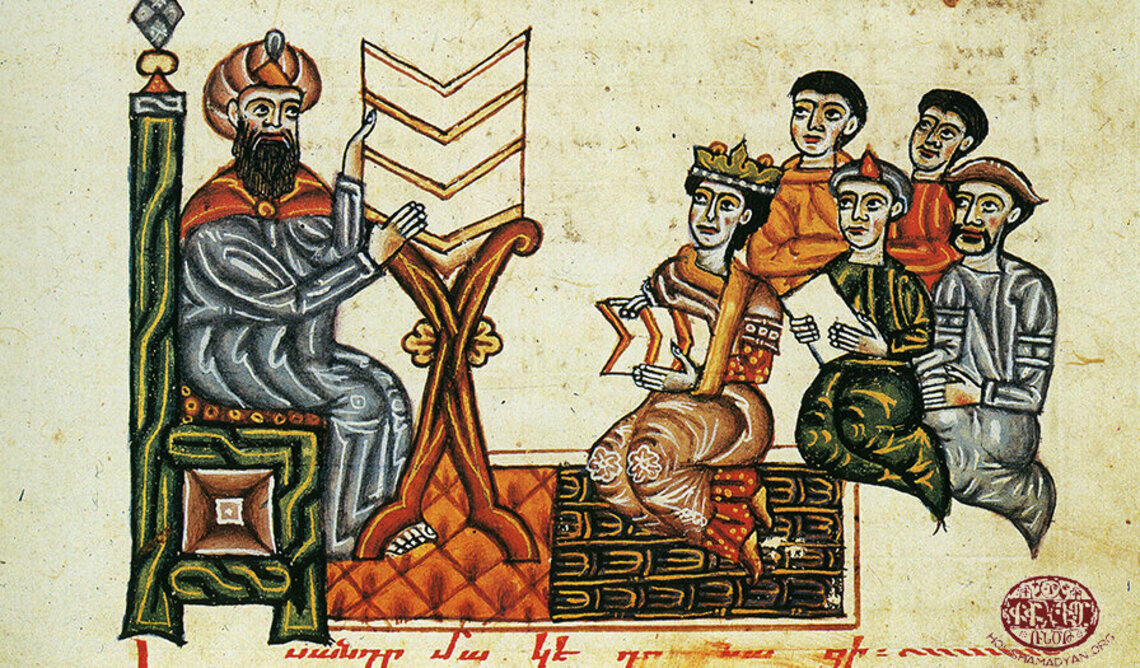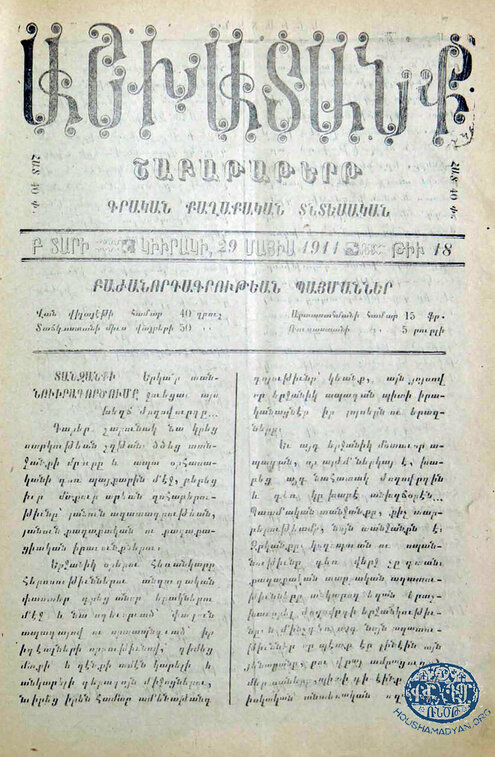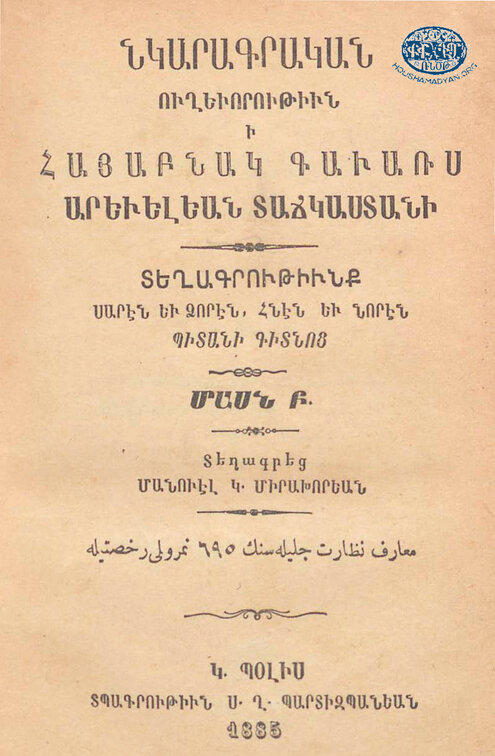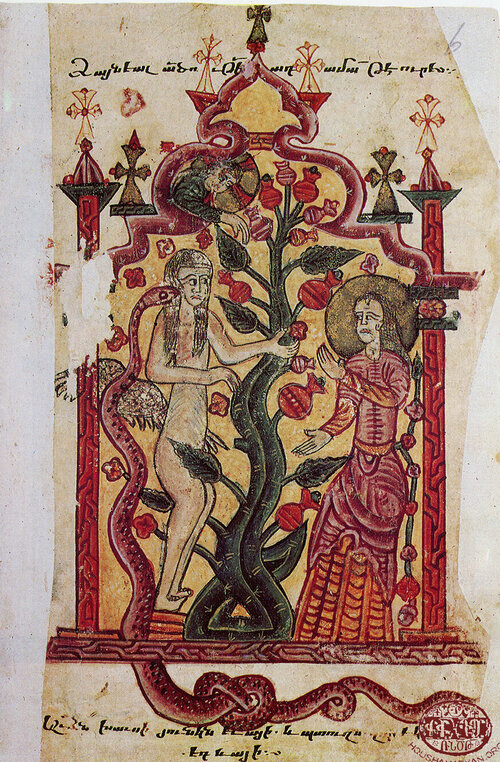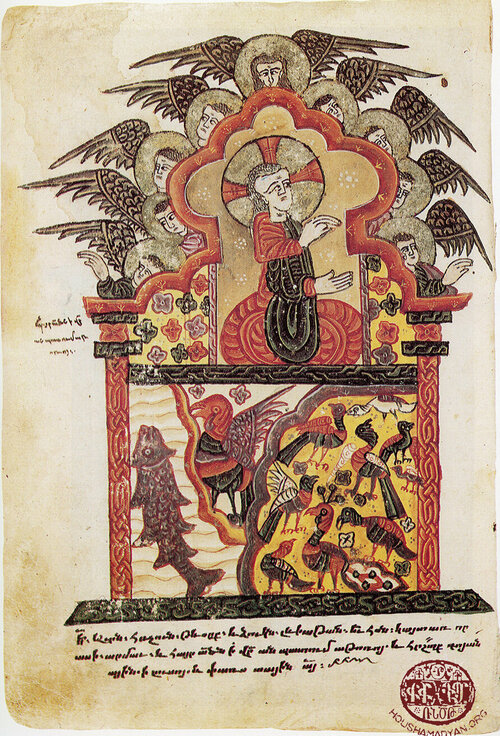The Churches and Monasteries of Ardjag
Author: Robert Tatoyan, 25/11/18 (Last modified 25/11/18) - Translator: Simon Beugekian

The Monasteries of Ardjag (nahiye)
Holy Virgin Monastery of Ardjag
The Holy Virgin Monastery was located to the south of the village of Ardjag.
The monastery was built on a hill and offered a beautiful view of the Ardjag Valley. Manuel Mirakhorian, who visited the site in 1883, mentioned that the cathedral was built of stone and mortar, and that it did not stand out in any way for its architecture. It was surrounded by only a few willow trees, which cast their shadows on the deserted hermitage.
The monastery’s festival day was celebrated on the Feast of the Assumption of Mary. On that day, large crowds of pilgrims would gather at the monastery.
The monastery operated until 1896. It was in good repair, and its finances were in good order. It fell under the spiritual jurisdiction of Varakavank, which appointed its abbot. One of these abbots, Father Daniel Torounian, opened a two-year school at the Holy Virgin in the 1880s.
During the Hamidian massacres of 1896, Father Daniel Torounian was killed, and the monastery was ransacked and abandoned, as were its fields and lands [1].
1) Askkhadank [Labor] Weekly, Van, May 29, 1911, Number 18.
2) M. Mirakhorian, Ngarakragan Oughevoroutyun i Hayapnag Kavars Arevelyan Dadjgasdani. Deghagroutyunk Saren yev Tsoren, Hnen yev Noren Bidani Kidnots [Descriptive Chronicle of Travels to Armenian-populated Provinces of the Eastern Ottoman Empire. Reports and Practical Information on Mountains and Valleys, on the Old and the New], Part B, Constantinople, M.G. Sareyan Press, 1885.

The Churches of Ardjag (nahiye)
Below, we present a list of the churches in the villages of Ardjag on the eve of the Genocide. The information was gathered from various sources. The list only includes villages in which the presence of a church could be confirmed.
Ardjag/Erçek
180 households, 1,170 Armenians.
The Saint Kevork Church. It was built in 1878, on the ruins of another church had that formerly stood at the site, and which had been burned down in that year by henchmen of Sheikh Djalalettin. It was domed, with a stone foundation and brick walls. It was described as “large and well-illuminated.” It also had its own small belfry.
Two priests served at the Saint Kevork Church [2].
The village was also home to the large cemetery called “Old Crosses” and the “Three Toukhnamoug” holy site/pilgrimage site. The ruins of the Saint Sarkis Monastery were located nearby, near the Kurdish-populated village of Krtvan [3].
Poghaskeasan/Boghaskesen (Boğazkesen)
12 households, 84 Armenians.
The Holy Virgin Church (roof built of wood). In the mid-1850s, the community had one serving priest [4].
Zarants/Aretoprak (Arıtoprak)
37 households, 240 Armenians.
The Saint Sarkis Church. In the mid-1850s, the community had one serving priest [5].
Lim/Karakoch (Karakoç)
22 households, 143 Armenians.
The Saint Sarkis Church. In the mid-1850s, the community had one serving priest [6].
Kharagonis/Karagunduz (Karagündüz)
230 households, 1,525 Armenians.
The Saint Teotoros Church (built of stone and mortar). In the mid-1850s, the community had two serving priests [7]. The village was also home to the ruins of the Saint Santoukhd, Kousha, and Ghazankilise churches, and the Saint Sarkis Chapel, which served as a holy site and a pilgrimage site. According to legend, the celebrated 16th century Armenian poet Nahabed Kouchag was born in Kharagonis [8]
Gartalan
3 households, 21 Armenians.
The Holy Virgin Church (roof built of wood) [9].
Gzelcha/Kozluca
65 households, 423 Armenians.
In the mid-1850s, the village had no functioning church. A church with an unknown name was built at a later date [10].
Hazara/Kayaboyun
45 households, 305 Armenians.
The Holy Cross Church (roof built of wood). In the mid-1850s, the community had two serving priests [11].
Hashpshad/Ashaye Geolalan (Aşağı Gölalan)
18 households, 126 Armenians.
The Holy Virgin Church (roof built of wood) [12].
Haspsdan/Beolekli (Bölekli)
22 households, 154 Armenians.
The Holy Virgin Church (roof build of wood) [13].
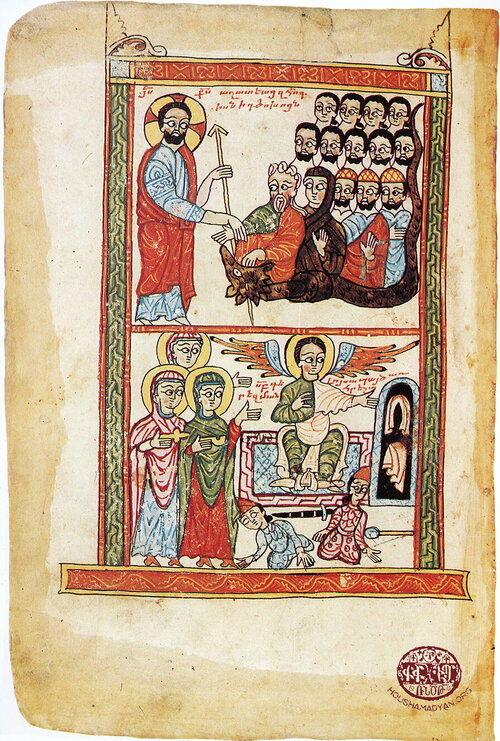
Gospel. Miniature illustrations by Zakaria Avantsi, from Aghtamar. The Bible is currently housed at the Mesrob Mashdots Repository of Manuscripts (Madenataran), number 5332, Yerevan (Source: Armenian Miniatures from the Matenadaran Collection, Nairi Publishing House, Yerevan, 2009).
Mantan/Mendil
60 households, 390 Armenians.
The Saint Sarkis Church. In the mid-1850s, the community had two serving priests [14].
Yalgouzaghach
7 households, 49 Armenians.
The village had one functioning church [15].
Napat/Chomakle (Çomaklı)
25 households, 165 Armenians.
The Saint Haroutyun Church (roof built of wood) ]16].
Shamshatin/Shemsetting (Şemsettin)
70 households, 465 Armenians.
The Saint Sdepanos Church (roof built of wood) [17].
Chakhmakh/Chemickh (Çemikh)
12 households, 78 Armenians.
The Holy Virgin Church (roof built of wood) [18].
Sevan/Ortanca
67 households, 439 Armenians.
The Saint Sdepanos Church (built of stone and mortar). In the mid-1850s, the community had one serving priest [19].
Daghveran/Dagheoren (Dağören)
37 households, 244 Armenians.
The Saint Hovhannes Church (roof built of wood). In the mid-1850s, the community had one serving priest [20].

[1] M. Mirakhorian, Ngarakragan Oughevoroutyun i Hayapnag Kavars Arevelyan Dadjgasdani. Deghagroutyunk Saren yev Tsoren, Hnen yev Noren Bidani Kidnots [Descriptive Chronicle of Travels to Armenian-populated Provinces of the Eastern Ottoman Empire. Reports and Practical Information on Mountains and Valleys, on the Old and the New], Part B, Constantinople, M.G. Sareyan Press, 1885, page 128; K. Sherents, Srpavayrer. Deghakroutyun Vasbouragani-Vana Nahanki Klkhavor Yegeghetsyats, Vanoreyits yev Ousoumnaranats [Holy Sites. Geography of the Most Significant Churches, Monasteries, and Educational Institutions of Van-Vasbouragan], Tbilisi, 1902, pages 83-84; Askkhadank [Labor] Weekly, Van, May 29, 1911, Number 18, pages 12-13; H. Vosgian, Van-Vasbouragani Vankere [The Monasteries of Van-Vasbouragan], Part A, Vienna, Mkhitarine Press, 1940, page 345.
[2] S. Avakian, Ardjag, Yerevan, Science Academy of the Armenian Soviet Socialist Republic – Institute of Anthropology and Ethnography, 1978, page 55.
[3] K. Patalian, “Arevmdyan Hayasdani Badmajoghovrtakragan Ngarakire Medz Yegherni Nakhorein. Mas Arachin: Vani Vilayeti Gendronagan, Husisayin, yev Arevelyan Kavarnere” [“The Historical-Ethnographic Character of Western Armenian on the Eve of the Armenian Genocide. First Part: The Central, Northern, and Eastern Provinces of the Van Vilayet”], VEM Pan-Armenian Journal, Year 7 (13), Number 2 (50), April-June 2015, page 120.
[4] Arevelyan Mamoul, September 1878, page 179.
[5] Ibid., page 179.
[6] Ibid.
[7] Ibid., page 180.
[8] Patalian, “Arevmdyan Hayasdani Badmajoghovrtakragan…”, page 121; Hayasdani yev Haragits Shrchanneri Deghanounneri Pararan [Dictionary of Place Names of Armenia and Surrounding Areas], Volume 2, D-G, Yerevan, Yerevan State University Press, 1988, page 678.
[9] Arevelyan Mamoul, September 1878, page 179.
[10] Ibid., Hayasdani yev Haragits Shrchanneri… Volume 3, G-N, page 184.
[11] Arevelyan Mamoul, September 1878, page 180; Hayasdani yev Haragits Shrchanneri Deghanounneri Pararan…, Volume 1, A-D, page 42.
[12] Arevelyan Mamoul, September 1878, page 180.
[13] Ibid., page 179.
[14] Ibid.
[15] Patalian, “Arevmdyan Hayasdani badmajoghovrtakragan…”, page 121.
[16] Arevelyan Mamoul, September 1878, page 179; Hayasdani yev Haragits Shrchanneri Deghanounneri Pararan…, Volume 3, page 942.
[17] Arevelyan Mamoul, September 1878, page 179; Hayasdani yev Haragits Shrchanneri Deghanounneri Pararan…, Volume 4, N-V, page 72.
[18] Arevelyan Mamoul, September 1878, page 179; Hayasdani yev Haragits Shrchanneri Deghanounneri Pararan…, Volume 4, page 942.
[19] Arevelyan Mamoul, September 1878, page 179; Hayasdani yev Haragits Shrchanneri Deghanounneri Pararan…, Volume 4, page 576.
[20] Arevelyan Mamoul, September 1878, page 180.
